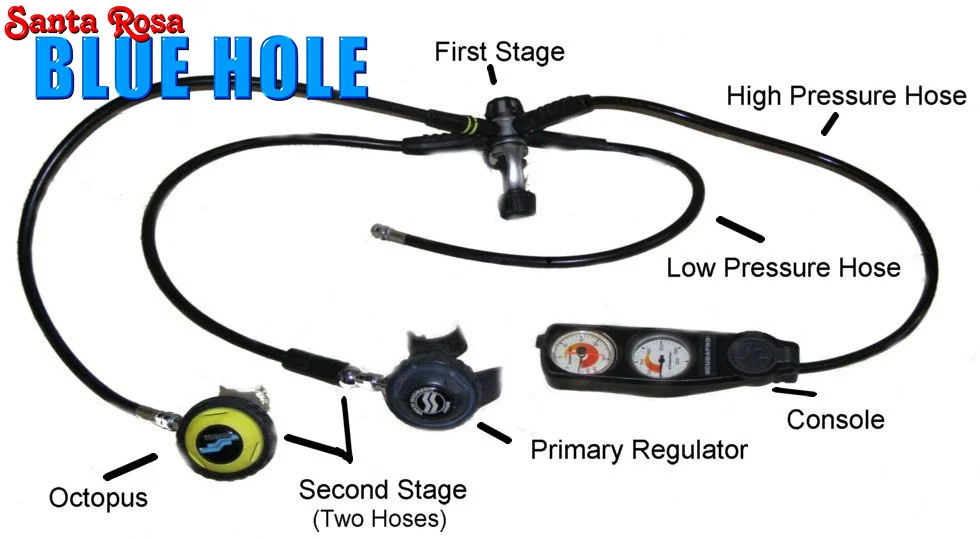Together with the diving vest and the diving bottle, the diving regulator forms the bottom of the diving equipment. The regulator connects to the dive bottle and is used to breathe underwater. In addition, the regulator has more functions. A complete regulator consists of a first stage, a second stage, an alternative second stage (ALV) , also known as octopus and a diving console. The dive console includes a depth gauge and a pressure gauge (pressure gauge) and eventually a dive computer and a compass.
The diving regulator is a rather complicated device and requires specialized maintenance. At least once a year take it to an authorized technical service for an inspection. Beginner divers often use the diving school regulator. Are you happy with this regulator and want to buy one yourself? All parts of a regulator are sold separately but it is advisable to buy the first and second stage and the octopus of the same brand or even set (with the same serial numbers).
Water depth and temperature will determine which regulator is the most suitable for use.
The phenomenon of pressure
You have probably heard of the concept of pressure or air pressure. On the ground, the air pressure is approximately 1 bar. That changes when we get on (for example on an airplane) and the pressure also changes in the water when we go down or up. For every 10 meters it drops, the pressure increases with 1 bar (and vice versa). Then at 20 meters deep the pressure is 3 bar. This increase in pressure affects the air-filled cavities in our bodies. So in the descent, our lung capacity reduces and we need to compensate our ears. The diving regulator and compressed air ensure that you can continue to breathe “regularly”.
The first stage
The first stage of a regulator is actually the first connection and regulator between the diving bottle and the regulator. This stage reduces the pressure of the bottle (from 200 – 300 bar) to an average pressure of 8 – 11 bar above the ambient pressure (above the water the ambient pressure is always 1 bar). The first stage consists of several hoses through which the other components can be connected. There are 1 or 2 high-pressure hoses and a minimum of 3 low-pressure hoses. The low-pressure hoses are used for the second stage and the inflator hose (from the vest inflator) and the octopus. An additional hose may be necessary when using a dry suit. The high-pressure hose is used for the diving console hose.
A distinction can be made in the first stage between a controlled piston or membrane stage. Membrane regulators are found only in the most expensive models. Due to the membrane, the first stage is less sensitive to cold water and dirty water.
The first stage can be compensated or not compensated. Compensated stages offer greater comfort during breathing because they provide constant breathing resistance at any depth or pressure in the diving bottle.
Then it is pertinent to mention the connection of the autograph to the faucet of the diving cylinder. There are two variants, the INT connection (clamp connection) and DIN (threaded connection) . Today the DIN connection is used more and is considered the most stable (safe).
The second stage
The second stage is the regulator with the mouthpiece (the round thing), so it exhales. The second stage reduces the average pressure to the ambient pressure of the diver. Also in the second stage, there are compensated and uncompensated systems. Compensated systems have greater comfort but are also more expensive. Often there is an external button for breathing resistance with which that resistance can be adjusted. On the front, there is a purge button to evacuate the water that entered.
The second alternative stage ( ALV ) – Octopus
The octopus is also connected to the low-pressure hose of the diving bottle. Therefore it is actually a second source of air. Nowadays it is mandatory to dive with an octopus. Not so much for himself, but to help another diver ( his buddy ) in case of emergency. The octopus is a second stage and always has a yellow hose, which is a little longer than the other hoses. There are alternative stages that are integrated with the inflator.

